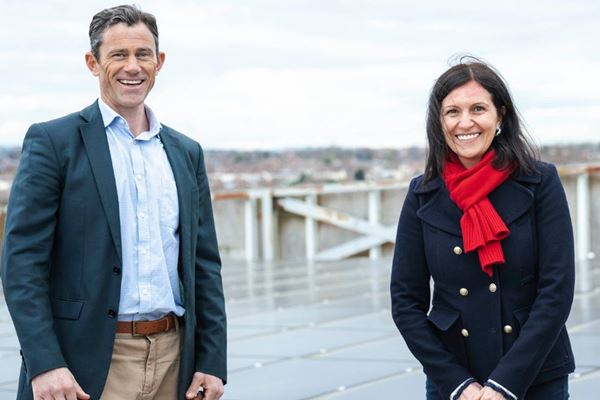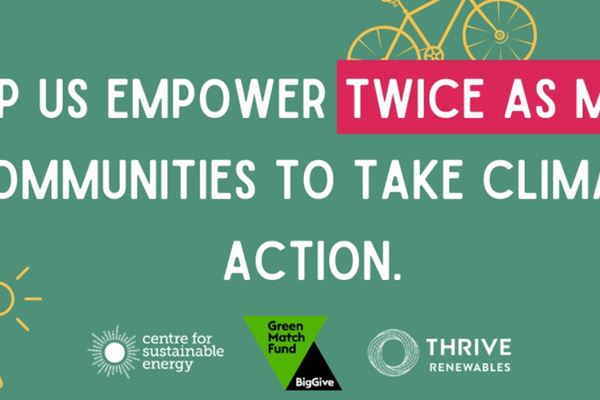Against a backdrop of rising energy prices and a worsening cost of living crisis, as well as rapid acceleration of green investment in the US and Europe, the government has been facing increasing pressure to take decisive action on net zero. A successful legal challenge from Client Earth also required them to publish a more thorough plan to meet their legally binding net zero targets before the end of March 2023.
In what some dubbed ‘energy security day’ and others called ‘green day’, the government formally responded last week, publishing a myriad of policy documents (more than 2,800 pages!) including its updated energy security, net zero and green finance strategies. The results were largely underwhelming – with a focus on technologies that are unproven and have poor, or no track record when it comes to deployment. Below we explore some of the key announcements made and what it means for our transition to a renewables-based energy system.
We shouldn’t be ignoring technologies that are cheap and easy to deploy
We were happy to see some positive announcements around offshore wind, solar and green hydrogen, along with some important consultations which will provide more clarity for these technologies in the years to come. However, it’s fair to say that the focus for new funding and policy was very much directed at nuclear and carbon capture and storage (CCS).
When delivering the Spring Budget, Jeremy Hunt launched a consultation to classify nuclear power as ‘environmentally sustainable’. It was therefore no surprise to see the government confirming that it would be scaling up the UK’s nuclear programme through its new ‘Great British Nuclear’ scheme, with the ambition to ramp up nuclear capacity to 24GW by 2050. As well as nuclear, the government used its ‘energy security day’ to reiterate its support for CCS, confirming up to £20 billion in funding.
As the Intergovernmental Panel on Climate Change (IPCC) stated recently, when it comes to net zero, there’s no time to waste – this really is our last chance to get it right. The issue is that small nuclear and CCS are still unproven and will take years to deliver. Renewables such as onshore wind and solar are some of the quickest to deploy and are already delivering cheaper, cleaner power to industry and local communities in the UK. The huge potential for renewable generation was also highlighted in Chris Skidmore’s recent Mission Zero report – an independent review of the government’s net zero strategy which resulted in 129 recommendations that would allow the UK to better reap the economic, environmental and social benefits of net zero. According to BusinessGreen, less than half of those recommendations will be taken forward.
While we await further clarification on the consultation into its National Planning Policy Framework, which would make building new onshore wind turbines easier in England, we welcome the government’s decision to make planning easier for solar, committing to developing a ‘solar roadmap’ that will set out the pathway to reaching 70 GW of solar generation capacity by 2035. It also announced a pledge to establish a joint taskforce to drive further growth.
A local route to net zero
Another of the measures identified in the Mission Zero report was the need for a Local Electricity Bill. Recognising the role communities have to play in the clean energy transition, Chris Skidmore suggested that alongside the Bill, the government should publish ‘a Community Energy Strategy that addresses the regulatory, legislative, funding and capacity barriers in the sector’, as well as the support available for innovative projects.
We’re big believers that, by introducing a Local Electricity Bill, the country could unlock the huge potential for small-scale, local energy systems which remove some of the technical challenges we currently face when it comes to transmitting energy. Not only do community energy projects help to bring cleaner, cheaper power to more homes and businesses across the UK, but they also create new jobs and acts as a driver for regeneration. Our recent work with Ambition Community Energy is an example of this in action – the group will be able to use the revenues from England’s largest onshore wind turbine to plug back into local good causes, including building an Energy Learning Zone which will help to upskill residents in Lawrence Weston, Bristol, for green careers. Unfortunately, it cannot currently supply electricity directly to local homes – which is something the Local Electricity Bill would help to address.
Dismissing the need for a community energy strategy, the government confirmed that it will continue to work with the sector through the Community Energy Contact Group on some of the key policy and delivery issues which impact the sector, as well as providing support to local authorities and community energy groups through its ‘local net zero hubs’.
As well as prioritising large-scale, early development projects, we think smaller, community-based projects have a huge role to play as part of a bottom-up transition that would allow us to decarbonise at the scale required for net zero. None of these changes will prevent us providing continued funding to community groups looking to build their own clean energy projects, building on the £16 million we have already invested in community-based wind and solar projects across the UK.
‘Everything, everywhere, all at once’
In March, the Intergovernmental Panel on Climate Change (IPCC) delivered its “final warning” on the climate emergency, confirming the urgency of taking more ambitious action and adding that, if we act now, we can still secure a more sustainable future. On releasing the report, the UN secretary general, Antonio Guterres, said that “Our world needs climate action on all fronts: everything, everywhere, all at once.”
Coming just a couple of weeks later, it feels like the government has missed an opportunity when it comes to low-cost, homegrown renewables, focusing more heavily on technologies and policies that will take a long time to start delivering and are more expensive than proven renewable technologies.
We now need quick and decisive action to ensure the UK not only stays on track to meet its decarbonisation goals but also incentivises further green investment moving forwards. While the government continues its consultations, for us it’s all about getting things done. We’ll continue funding and building new clean energy projects that contribute to the UK’s net zero goals and deliver cleaner, cheaper power for people today.

Thrive named in the Green Finance Strategy
We were pleased to be mentioned in the government’s Green Finance Strategy for our investment in the United Downs deep geothermal electricity generation plant – the first of its kind in the UK.
Providing the first commercial funding for the project in 2020, we invested an additional £3 million in March, which will be used to complete construction by 2024. The site will provide essential baseload power for the grid at peak times, supporting the electricity generated by wind and solar, as well as geothermal heat for use locally.
The project could mark the start of a new sustainable industry in Cornwall, bringing green jobs and investment into the county.



